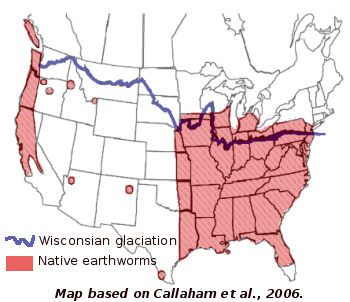
Do we have native earthworms?
 In gardening circles, worms are considered
a panacea. In ecological circles, though, you'll hear talk of the
dangers of invasive earthworms. So, what's the dirt on wrigglers?
In gardening circles, worms are considered
a panacea. In ecological circles, though, you'll hear talk of the
dangers of invasive earthworms. So, what's the dirt on wrigglers?
I've heard it bandied about that there are no native earthworms in the
U.S. Wrong. The Wisconsian glaciation, which ended 12,000
years ago, did wipe out
earthworms under the ice, but this only affected the northernmost
states. Since then, the native worms have advanced back north a
bit past the glaciation line.
Here in southwest Virginia, we've got native worms. Unless you
live out west or way up north, you probably do too.
| This post is part of our Earthworms in the Garden lunchtime series.
Read all of the entries: |
Want more in-depth information? Browse through our books.
Or explore more posts by date or by subject.
About us: Anna Hess and Mark Hamilton spent over a decade living self-sufficiently in the mountains of Virginia before moving north to start over from scratch in the foothills of Ohio. They've experimented with permaculture, no-till gardening, trailersteading, home-based microbusinesses and much more, writing about their adventures in both blogs and books.
Want to be notified when new comments are posted on this page? Click on the RSS button after you add a comment to subscribe to the comment feed, or simply check the box beside "email replies to me" while writing your comment.

I have had some construction done on my homestead and the soil was highly compacted in places. I would like to use mulch and NATIVE earthworms to loosen the soil. Can you tell me which species are native (I have read that there are a couple of species but I can't find their names), and where I may be able to buy a couple thousand of them to get things started.
Thanks Stewart (also in southwestern VA)